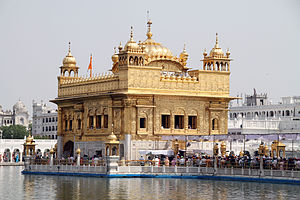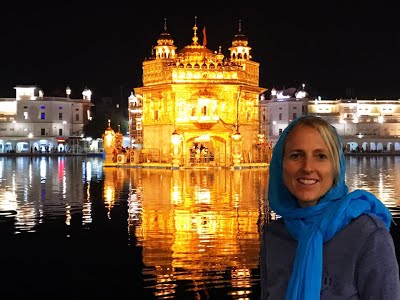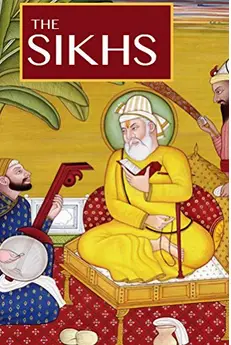|
TRANSLATE THIS ARTICLE
Integral World: Exploring Theories of Everything
An independent forum for a critical discussion of the integral philosophy of Ken Wilber
 David Christopher Lane, Ph.D.
Professor of Philosophy, Mt. San Antonio College Lecturer in Religious Studies, California State University, Long Beach Author of Exposing Cults: When the Skeptical Mind Confronts the Mystical (New York and London: Garland Publishers, 1994) and The Radhasoami Tradition: A Critical History of Guru Succession (New York and London: Garland Publishers, 1992). David Christopher Lane, Ph.D.
Professor of Philosophy, Mt. San Antonio College Lecturer in Religious Studies, California State University, Long Beach Author of Exposing Cults: When the Skeptical Mind Confronts the Mystical (New York and London: Garland Publishers, 1994) and The Radhasoami Tradition: A Critical History of Guru Succession (New York and London: Garland Publishers, 1992).SEE MORE ESSAYS WRITTEN BY DAVID LANE SEE MORE ESSAYS WRITTEN BY ANDREA DIEM-LANE “Devotional Thickness”The Sacredness of Human LongingDavid Lane and Andrea Diem-LaneMarch 22, 2017 | Golden Temple, Amritsar
I didn’t expect to be overwhelmed with emotion and I certainly didn’t expect to be transformed by the experience.
I didn’t expect to be overwhelmed with emotion and I certainly didn’t expect to be transformed by the experience. But there I was witnessing something quite astonishing, and right in the midst of it a long forgotten book title by C.S. Lewis came to the forefront of my mind . . . . “Surprised by Joy.” The atmosphere was electric, but what struck me most forcefully was the unconditional love that permeated the surroundings. It was on the night of March 21, 2017, and I wanted to see the holiest of Sikh gurdwaras, the Golden Temple. My family and I had just arrived in Amritsar in the Punjab just a few hours prior on Vistara Airlines from Delhi. I was in India conducting research for a new project for Oxford University Press and only had 12 or so hours before having to travel to the Radha Soami Satsang center at Beas. Although I had first visited the Golden Temple in the summer of 1978 (which, coincidentally was also connected with a research project on the same subject), I had never seen it at night. I knew that the surrounding area had been dramatically renovated and that the Golden Temple had become increasingly popular as a tourist destination, but what I hadn’t realized was how crowded it had become at almost all hours of the day. There are several factors that make the Sri Harmandir Sahib (literally, “Abode of God”) unique. One immediately notices, for instance, that there are no security checkpoints for entering into the complex. No visible metal detectors, no frisking by armed guards, no restrictions of any kind on who may or may not enter the sacred grounds. All that is required is to wear proper attire, going barefoot so as to cleanse one’s feet before entering, and wearing a head covering.  The Harmandir Sahib (The abode of God), known as the Golden Temple The Sikh religion was founded by Guru Nanak, who was born in the latter part of the 15th century and established a lineage of nine succeeding human gurus (from Guru Angad to Guru Gobind Singh). It was the tenth guru in the 18th century who proclaimed that the holy writings of six of the Sikh gurus along with selected writings from such Sants as Kabir, Namdev, and the Sufi mystic, Sheikh Farid, would serve as the “final and eternal living guru” for all followers of the Sikh religion. Written in Gurmukhi script, the Guru Granth Sahib is held in the highest respect by Sikhs worldwide since it contains the essence of their spiritual philosophy. The book is housed in the innermost sanctum of the Golden Temple and is recited daily and is treated with the utmost care. Our driver, with the very apt and accurate name of “Happy”, wanted my family and I to have a glimpse of the inner sanctum of the Sri Harmandir Sahib, even though it was just after 10 p.m. at night when a palanquin (known as the Palki Sahib) carries the sacred holy book of the Sikhs, the Guru Granth Sahib to the Akal Takhat Sahib. At this time, visitors (especially foreigners) are discouraged from entering the temple since devotees clean the Sri Harmandir Sahib for an hour or so. Fortunately, however, due to “Happy’s” persistence we were allowed to witness the diligent work of these Sikh sevadars as they sang in the most intense and enchanting way the Gurbani Kirtan. I cannot even begin to describe how completely engaged and sincere the many sevadars were in doing the cleaning. It wasn’t perfunctory in the least, but rather seen as a great honor to be able to do such work. And one could palpably feel the energy, the excitement, and the yearning underlying the devotional singing. It was a surreal scene, the likes of which I will never forget. Although I am not a Sikh, it was impossible not to be transfixed by the magnificence of the Golden Temple, but even more by the earnest love and devotion I personally saw among the vast throng who felt blessed by being able to glimpse their beloved guru. Coming home, late that night, I realized anew that what makes something sacred or numinous is the earnest desire of humans for that which transcends them. While I am sure there is a better description for what I witnessed, somehow the phrase “Devotional Thickness” rung true. It is a human product and as such can illuminate and shine forth at anytime, anywhere, and at any place. It is not restricted to any particular ism and because of this, it can manifest unexpectedly. Of course, some places and some gatherings tend to bring out the very best in us and because of such, they become “sacred”. The sanctity is not necessarily geographical (though that too does play a part), but rather part and parcel of our biological (and biographical) make-up. Bring the deepest yearning in a human being to the forefront and you have the very best of spirituality, even if it is in a conference room filled with agnostics and atheists. What transforms is the human heart and what I saw at the Golden Temple was both simple and profound: a wide diversity of people bringing their “best” selves and their “deepest” aspirations. It makes perfect sense, regardless of one’s religious affiliation (or lack thereof) to want to visit such communal centers of worship. As we all know, the world has far too many areas where humans bring their worst selves and act accordingly. Even though there is much to criticize about religion, it is vitally important to remember that at certain times and in certain places unbounded human longing can be allowed to flourish and it is then and there that we can get a glimpse of the transcendent. This unique human quality, which in German is called called Sehnsucht (“intensely missing”), though usually expressed through religion, can manifest wherever and whenever we acknowledge the mystery that both precedes and transcends us—whether it is a gathering of astronomers pondering the deepest reaches of the Milky Way or devoted Sikhs honoring the wisdom of their gurus and their teachings. 
Dr. Andrea Diem-Lane, author of the book, The Sikhs,
visiting the Golden Temple at night for the first time. Excerpt from The Sikhs by Dr. Diem-Lane Important Dates from Nanak to Gobind Singh
|
